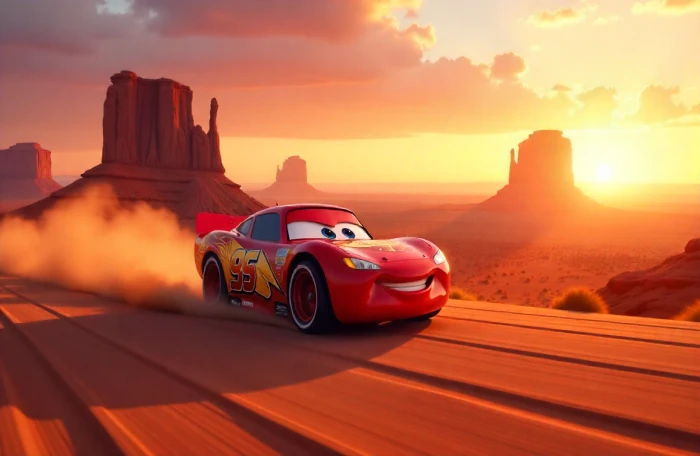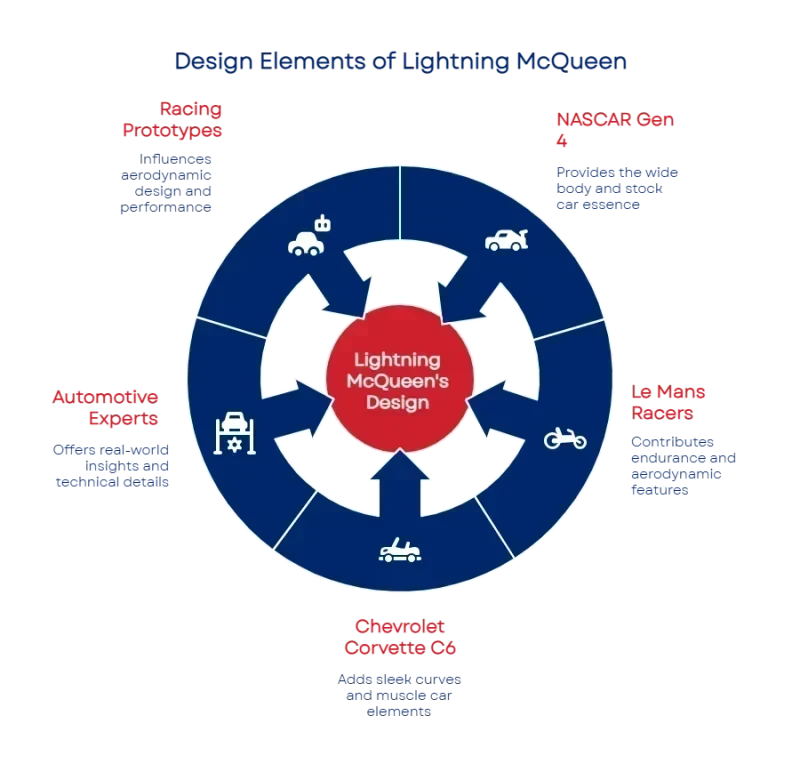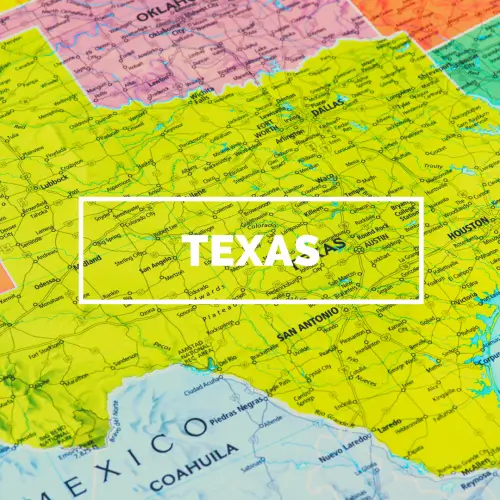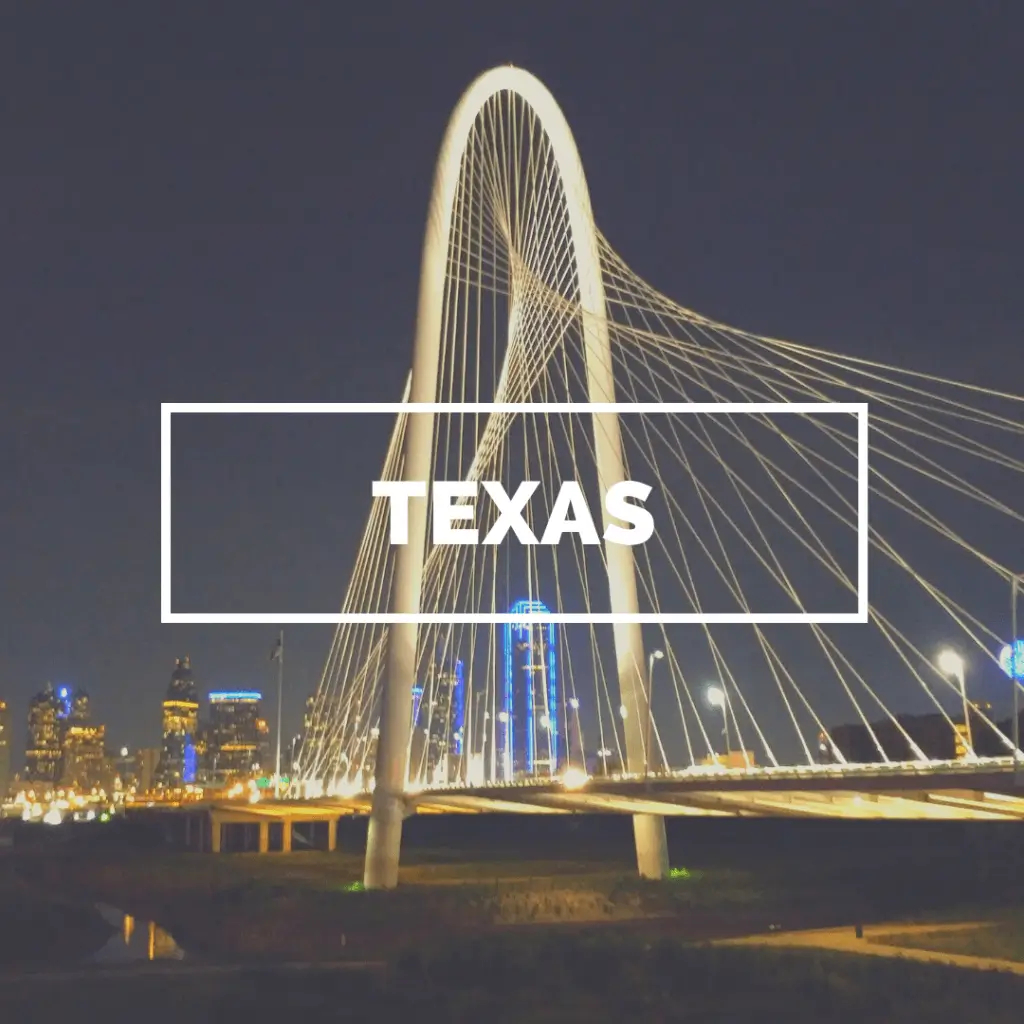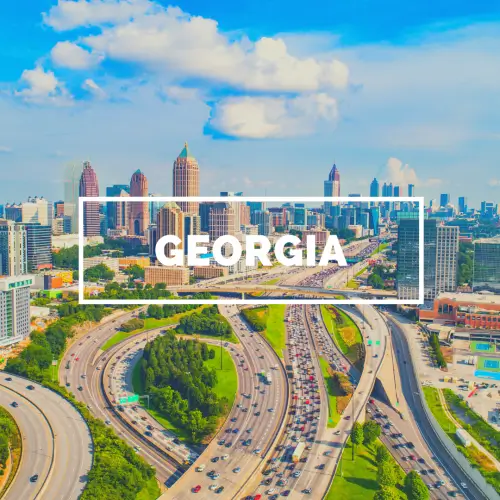Most kids today know Lightning McQueen before they know what a Camry is.
That’s not an exaggeration. In fact, many families can quote “Ka-chow!” before they can name their car’s make and model. Whether you’ve watched Cars once or 30 times, Lightning isn’t just a movie character; he’s a household name, a red blur on plastic lunch boxes, party plates, and bedtime pajamas.
He’s also a symbol of something bigger.
Lightning McQueen represents fun, speed, and growth. He’s not perfect; and that’s the point. He starts out selfish, fast, and flashy. But over time, he learns how to be a better friend, a better teammate, and a better version of himself. That growth is what keeps fans coming back.
In this post, you’ll see how Lightning McQueen became more than a race car. We’ll break down the real vehicles that inspired him, how he changed through the films, and how he left the screen to become part of our everyday lives, from collector toys to racing games to real-world car shows.
And if you're wondering what it would take to ship a car like Lightning McQueen today; yes, we’ll get to that too.
What You'll Discover:
What kind of car is Lightning McQueen, really?
How has Lightning McQueen’s character changed across the Cars movies?
How has Lightning McQueen inspired real-world merchandise, collectibles, and even car culture?
Overview
Lightning McQueen's design is a blend of real-world race car influences, primarily to capture the essence of speed and performance while creating a memorable animated character. Here's a more detailed breakdown:
Real-World Inspirations
This covers the specific vehicles that designers looked at to inform Lightning McQueen's appearance and capabilities, like NASCAR Gen 4 stock cars, the Chevrolet Corvette C6, and the Ford GT.
Technical Specifications
This focuses on estimated details like top speed, horsepower, and dimensions, aligning Lightning McQueen with real-life racing counterparts.
Animated Character Development
This pertains to how Lightning McQueen's personality and role in the Cars films shaped his design and made him more than just a race car.
Merchandise and Cultural Impact
This addresses how Lightning McQueen has extended beyond the screen into toys, games, and other products, becoming an icon in popular culture.
Lightning McQueen’s Story
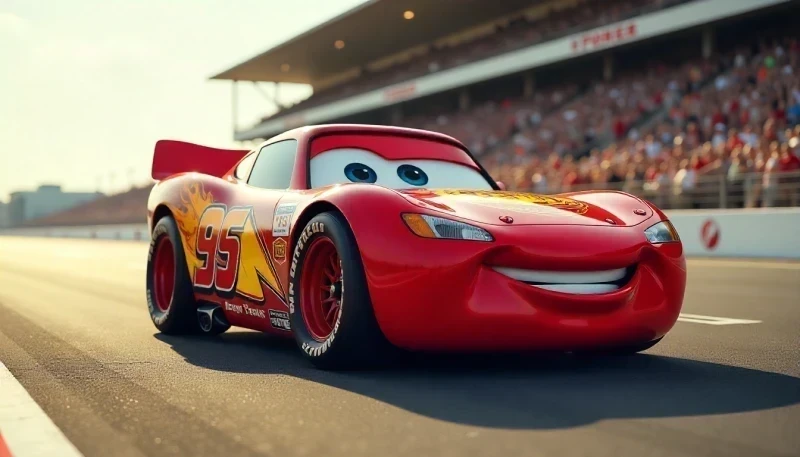
Lightning McQueen didn’t begin as a star. He started as a rough sketch on a Pixar storyboard back in the early 2000s. The idea was to create a car that looked fast, acted bold, and had room to grow.
Pixar’s team didn’t want a perfect hero. Instead, they wanted a character who made mistakes and learned from them. So Lightning was built to be overconfident and flashy, right down to his bright red paint and racing decals. But over time, he changes. That character growth became central to Cars and its success.
Released in 2006, the movie earned over $462 million at the global box office. It wasn’t just a one-time hit. Cars 2 brought in $562 million in 2011, and Cars 3 added another $383 million in 2017. That’s well over a billion dollars combined, not counting toys, games, or merchandise.
The success came from more than good animation. Fans connected to Lightning’s story: a fast racer forced to slow down and figure out what really matters. His time in Radiator Springs wasn’t just a plot twist. It was a turning point that made the character relatable and lasting.
Today, Lightning McQueen is still on screen, still in stores, and still winning over new fans.
What Kind of Car Is Lightning McQueen, Really?
Lightning McQueen isn’t modeled after just one vehicle. He’s a custom blend of race car legends that includes NASCAR Gen 4 stock cars, Le Mans endurance racers, and the Chevrolet Corvette C6. That combination gave him a wide body, low stance, and sleek curves built for speed.
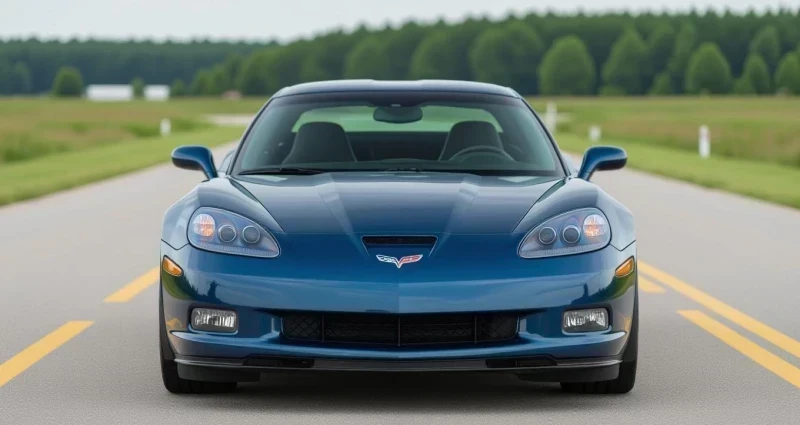
Lightning McQueen looks like he belongs on a real track, and that was no accident. Production designer Bob Pauley and the Pixar team spent time studying real-world race cars and working closely with automotive experts. They visited tracks, met pit crews, and got under the hood to understand how real cars handle at high speeds. That research shows up on screen.
Lightning’s rounded edges, oversized wheels, and new tires are all based on performance design. His front end is shaped like a muscle car, while his aerodynamics reflect racing prototypes. Even his headlights are stickers, a detail borrowed directly from NASCAR, where weight and function take priority over looks.
He’s not just a cartoon. He’s a racer with real DNA.
From the opening scene of the first film to his final sprint in the last race of Cars 3, Lightning moves and handles like a real contender in any race. That’s why fans still talk about his design today.
Is Lightning McQueen Based on a Real Car?
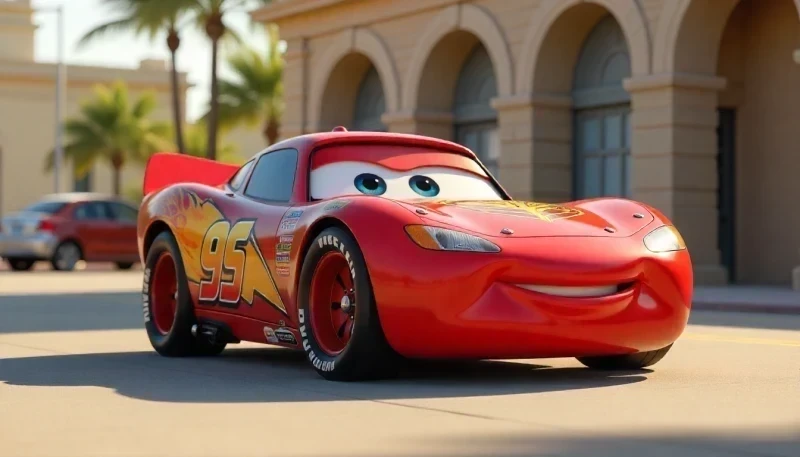
Lightning McQueen might live in the world of Cars, but his build and performance are closely modeled after real race cars. Although Pixar never labeled him as one specific model, the influences are clear: NASCAR Gen 4 stock cars, the Chevrolet Corvette C6, and even the Ford GT. All three helped shape McQueen into a race car that looks and drives like a champion.
Lightning McQueen’s Estimated Technical Profile
Top Speed: Estimated up to 198–200 mph
0–60 mph: Estimated between 3.2 and 4 seconds
Engine: “Full race V8,” typically associated with a 5.9L NASCAR-style V8
Horsepower: Often listed at 750 HP
Length: Estimated around 206 inches
Width: Approximately 78 inches
Height: Around 53 inches
These numbers place him right in line with real-life competitors from the NASCAR circuit during the Piston Cup season reflected in the first Cars film.
Real-World Counterparts
NASCAR Gen 4 Stock Car (1992–2007)
Engine: 358 cu in (~5.9 L) pushrod V8
Horsepower: 650–750 HP
Top Speed: ~200 mph
Wheelbase: 110 in
Length: ~203–206 in
Width: ~75–78 in
Chevrolet Corvette C6
Horsepower: 400–505 HP
Top Speed: 186–205 mph
Length: ~175 in
Width: ~72 in
Ford GT
Horsepower: 550–660+ HP
Top Speed: 205+ mph
Length: ~184 in
Width: ~80 in
Lightning’s aerodynamic form, wide stance, and race-ready features make sense when compared side-by-side with these vehicles. His headlight decals reflect standard NASCAR practice, and his body shape allows for maximum downforce on track, important when you're part of a high-performance racing team.
Pixar’s team didn’t design him in a vacuum. Supervising animator Bobby Podesta and the rest of the crew worked with real racing experts to study how these cars accelerate, corner, and react under pressure. Every detail, from spoiler angle to tire grip, was crafted to make Lightning feel believable on screen.
Even his hometown of Radiator Springs plays a part in how he evolves as a character and as a racer. The time he spends away from the spotlight, getting new tires, going on road trips, and learning from his crew chief, gives Lightning more depth than a standard race car design would allow. He begins as a solo driver obsessed with the finish line but learns, through experience and connection, what makes a racer truly great.
While Lightning may not have a real VIN number or roll off a factory line, his blueprint is built on real-world automotive engineering. He’s more than animation; he’s a performance machine with the specs to back it up.
Transporting Rare Vehicles with AmeriFreight Auto Transport
If Lightning McQueen were a real car, moving him across the country wouldn’t be as simple as firing up the engine and hitting the highway. A custom-built race car with that much power, value, and brand recognition would need high-level care, especially if you’re hauling him to a show, track, or event.
Shipping a vehicle like Lightning would mean treating him like a classic or performance car. That’s where professional auto transport comes in. Like Mack in the movie, an enclosed carrier would protect Lightning’s bright red paint from weather, debris, and road wear.
At AmeriFreight Auto Transport, we specialize in exactly that kind of protection. We transport and help you choose the safest method, whether that’s enclosed shipping or top-load placement. If you’re moving across the state or across the country, it makes a big difference in how the car arrives.
Frequently Asked Questions (FAQs)
Who voices Lightning McQueen in Cars 1?
Owen Wilson voices Lightning McQueen in Cars, bringing charm and just enough ego to fit the red race car perfectly. His voice helped define the character’s identity across all three films.
Is Cars 4 confirmed?
Cars 4 has not been officially confirmed by Pixar or Disney. While the film’s creative director Jay Ward has hinted that new Cars-related projects are in development, no press release or formal announcement has specified a fourth feature film.
How old was Lightning McQueen in Cars 1?
While Pixar never gives a birth date, creators describe Lightning as a “young hotshot,” roughly like someone in their early 20s. His behavior supports that: he skips his pit crew, blows a tire, and nearly loses the Piston Cup. His arrogance early on shows he’s still learning. By the end of the film, he slows down to help another racer finish. That change shows maturity. He learns that making the wrong call can blow the whole race, and that winning isn’t everything.
Does Lightning McQueen Have Car or Life Insurance?
In the Cars universe, Lightning McQueen likely has both performance and accident coverage, given his frequent crashes and race-related damage. Interestingly, Cars 2 mentions Insuricare, a company offering "car life insurance,” which is the same insurer Bob Parr works for in The Incredibles, linking the two Pixar worlds.
Reference:
Retrieved September 5, 2025, from nascar.com
Retrieved Chevrolet Corvette C6 September 5, 2025, from corvettewarehouse.com


